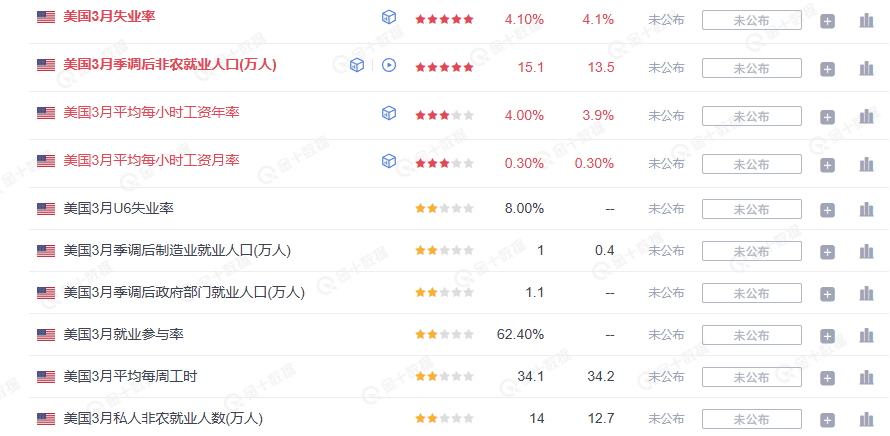Two things today: one is the release of the non-farm payroll data tonight. If it aligns with current market expectations, it should ease market pressure a bit. But more importantly, at 11:25 PM Beijing time, Federal Reserve Chairman Powell will speak on the economic outlook. This speech can be seen as the Fed's expectations for the current economic situation. Personally, I estimate that Powell will definitely not mention anything like an economic recession. Last time, he shifted the blame to Trump, saying that if inflation rises, it might be due to tariffs. This time, I estimate there might be four points: 1. The growth of the U.S. economy is slowing, the labor market is strong, but the overall economic level is stable. 2. Tariffs will lead to inflation, but the impact of a one-time tariff increase on inflation is limited. 3. The Fed does not believe the economy will enter a recession, but if tariff-induced retaliation poses a downside risk to the economy, the Fed will take additional measures. 4. No comment on the path of interest rate cuts. All of the above are my personal estimates and do not necessarily reflect what will happen. This tweet is sponsored by @ApeXProtocolCN | Dex With ApeX
This Friday, Beijing time, is the monthly non-farm payroll data release again. Labor data remains one of the key focuses for the Federal Reserve, with the unemployment rate being the most impactful part of the non-farm payroll data. The previous value was 4.1%, and the market expectation is also 4.1%.
In fact, we're back to a point where any data is considered bad data. If the unemployment rate continues to decline, it will reduce the expectation of a rate cut by the Federal Reserve, as a declining unemployment rate indicates a healthy U.S. economy, and indeed, a decrease in unemployment can alleviate market anxiety about an economic recession.
However, if the unemployment rate rises, especially if the increase is significant, while it may indeed raise the probability of a rate cut by the Federal Reserve, a higher unemployment rate indicates a greater likelihood of economic problems. So even if rates are cut, it would be seen as a sign of an impending economic recession.
Therefore, the best scenario is for the data to remain unchanged or to rise slightly, for example, to 4.2%. This would send some signals to the Federal Reserve without causing panic among users, as a 4.2% unemployment rate is still relatively low.
Following the unemployment rate is the employment data, which is certainly better the higher it is, as it represents a good current job market environment and a healthy economy. Finally, there's the wage data. If this is high, it is not conducive to reducing inflation, but if it is low, there are concerns that the economy might face issues.
So, indeed, the difficulty in April is increasing.
This tweet is sponsored by @ApeXProtocolCN | Dex With ApeX

210.45K
83
The content on this page is provided by third parties. Unless otherwise stated, OKX is not the author of the cited article(s) and does not claim any copyright in the materials. The content is provided for informational purposes only and does not represent the views of OKX. It is not intended to be an endorsement of any kind and should not be considered investment advice or a solicitation to buy or sell digital assets. To the extent generative AI is utilized to provide summaries or other information, such AI generated content may be inaccurate or inconsistent. Please read the linked article for more details and information. OKX is not responsible for content hosted on third party sites. Digital asset holdings, including stablecoins and NFTs, involve a high degree of risk and can fluctuate greatly. You should carefully consider whether trading or holding digital assets is suitable for you in light of your financial condition.

